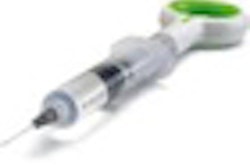
A continuous ultrasonic irrigation device outperformed conventional needle irrigation in a study comparing the ability of the devices to remove root canal debris (Journal of Endodontics, September 2012, Vol. 38:9, pp. 1261-1264).
The study authors, from the department of endodontology at the Oregon Health and Science University School of Dentistry, found that the continuous ultrasonic device "left significantly less debris present in root canals at 1 and 3 mm from the working length."
They set out to test the theory that continuous flow irrigants are superior to intermittent irrigation because the fluid is constantly replaced. Previous studies have shown that the volume of irrigant used in the procedure is a factor in the debris and bacteria reduction in root canals, they noted.
Presence of debris
For the comparison, the researchers compared the VPro StreamClean system (VSS, Vista Dental Products) with a 30-gauge stainless steel side-vented ProRinse needle (Dentsply).
"In the absence of available information on the VSS, the purpose of this in vitro study was to compare the VSS with conventional needle irrigation when used as a final irrigation procedure to debride the apical region of the root canal," the researchers wrote.
“The conclusions are sound.”
They used 46 human permanent, single-rooted teeth to create 20 matched paired teeth sets, each set from the same patient. Four teeth left unprepared served as histologic controls. Radiographs confirmed that single straight canals of comparable size were present in each of the matched pairs. After preparing the coronal access cavity, the researchers set the root canal working length to a consistent apical size and taper.
Pilot studies confirmed the presence of debris after the teeth were prepared. The researchers took six sections from each root segment, then stained, mounted, and placed them on slides and viewed them with a digital microscope. Using the resulting images, they visually outlined and quantified the debris in the canal lumen area using an image analysis program. Average debris was noted at 1- and 3- mm levels for each tooth.
The researchers acknowledged the difficulty -- or impossibility -- of controlling for the amount of debris present at baseline.
"The results of the pilot studies showed that, in untreated teeth, the percentage debris averaged 25% and 26% at the 1- and 3- mm levels, respectively," they wrote, noting that the percentage of debris averaged 14% at both levels in teeth that had been instrumented.
Coin toss
For the irrigation part of the study, the researchers selected one tooth from each pair based on a coin flip. In the VSS group, the irrigant was delivered via a 30-gauge open-ended nickel titanium needle tip attached to an ultrasonic handpiece. An automated pump was used for controlled delivery of the irrigant to the VSS needle tip.
The samples in the conventional needle irrigation group went through three consecutive irrigation cycles, and the amount of debris was quantified with the method used earlier in the study.
At the 1-mm level, the researchers found significantly less debris in the VSS group (0.93%) compared with the conventional needle irrigation (5.99%) groups overall (p < 0.0001). At the 3-mm level, VSS irrigation resulted in 0.45% debris compared with 5.16% left from conventional needle irrigation.
Monica Anderson, DDS, a general dentist, writer, and motivational speaker based in Austin, TX, stated in an email to DrBicuspid.com that "the conclusions are sound."
"The study has a slight bias, but the science seems good," Dr. Anderson said.
The researchers acknowledged that Vista Dental Products provided the VSS for the study, but they also denied any conflicts of interest related to the study.



















